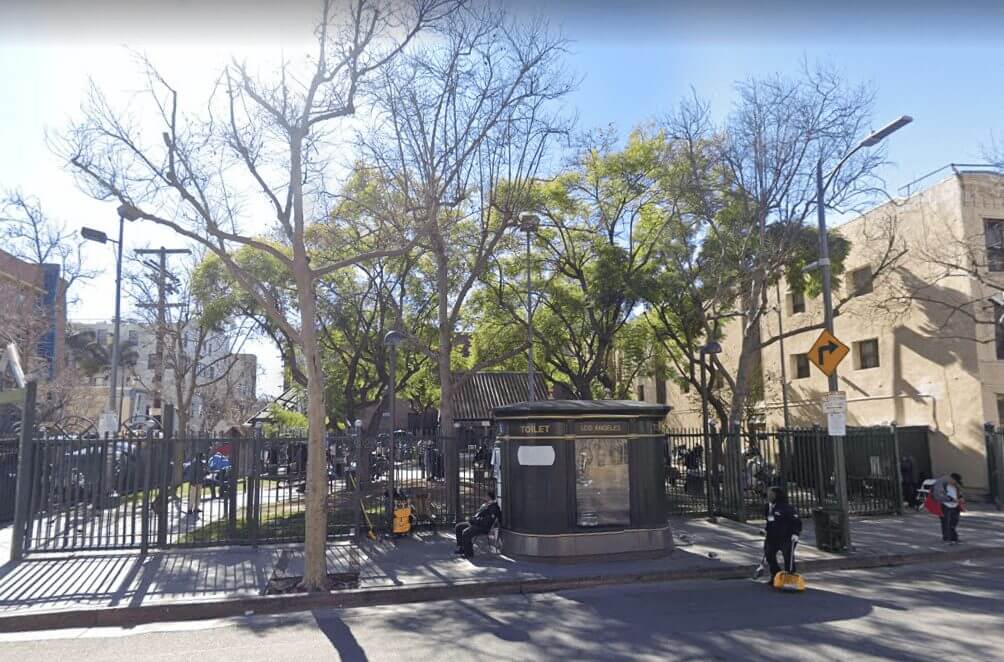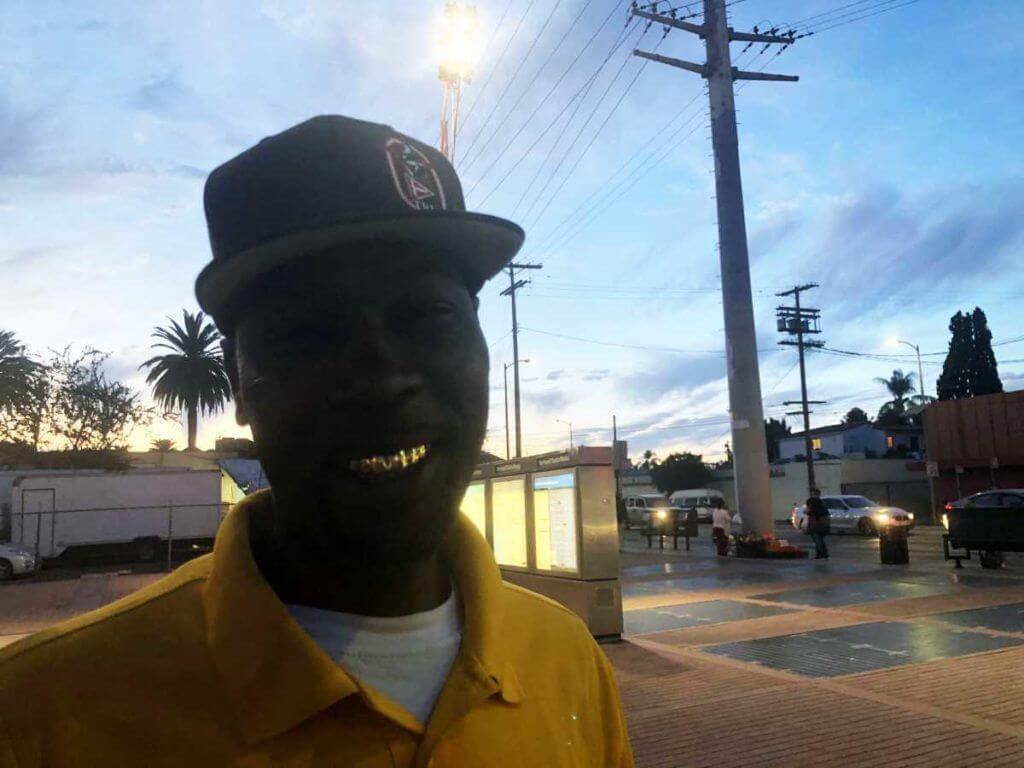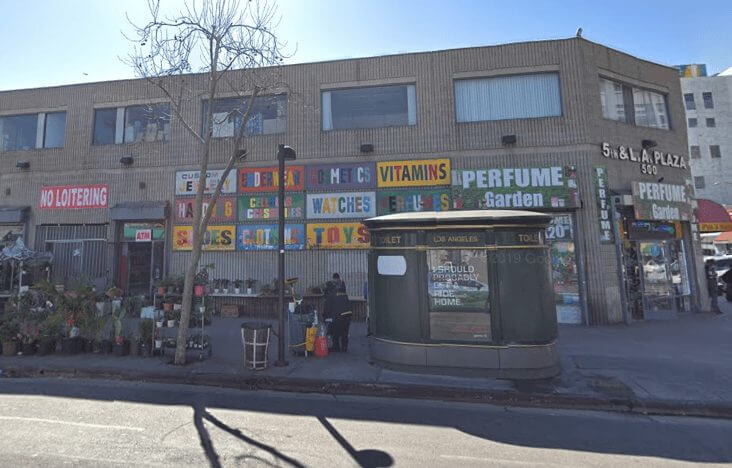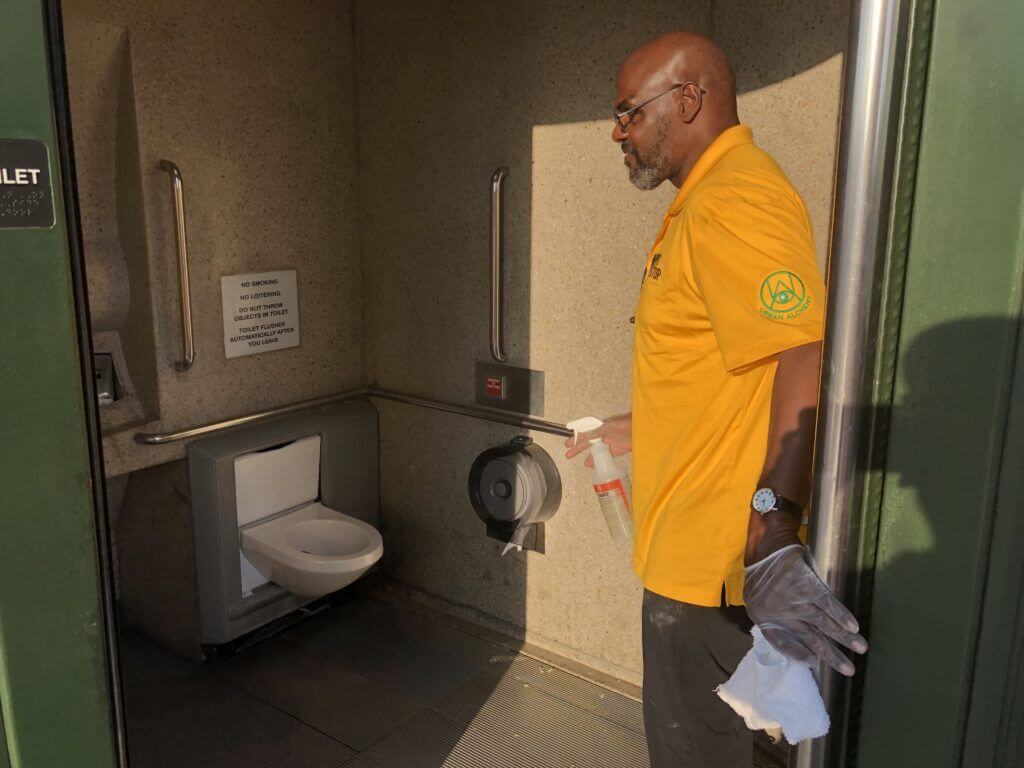The Dept. of Public Works have 16 public restrooms manned from 7 a.m.-7 p.m. throughout the city — providing respite and, in some cases, jobs for those needing a second chance.
When you gotta go, you gotta go. But is there an oasis that’s clean… and safe? Where you don’t feel the pressure of having to buy a $4 cup of coffee or a McRib? Yes. The answer is yes! Sprinkled throughout L.A. are Parisian-styled public restrooms that are not only free to use, but they are cleaned after every single use and monitored by attendants who keep the facilities safe.
These men and women make sure no funny business is going on inside. They keep the line in order. And they even track the time, date and sex of each bathroom user. The location at East Hollywood is used by about 50-75 people a day. Only about 15% of the visitors are women.

It’s safe to say that these facilities are the safest, cleanest places to tidy up in all of L.A.
Currently, there are 16 staffed “pit stops” run by the Department of Public Works from Echo Park to Venice to Wilmington to Skid Row. Nine of them are portable facilities, but the others are so beautiful and French-looking you may have passed them right by never knowing their true purpose or the people who lord over them.
On a recent afternoon at the Vermont/Santa Monica location, patron Michael Hicks, a Long Beach resident, had ridden Blue Line to the Red Line on this way to West Hollywood. But before he continued his travel west, he popped into the bathroom. “It was the first time I ever used this one,” Hicks said, sporting a Good Vibes t-shirt. He appreciated that his bike fit into the restroom even with the door closed. When he was done he was ready for his bike ride west.
The Keys are the Attendants
Attendant Andre Broom, a South L.A. native who was hired just a few weeks ago, says patrons have about four minutes to freshen up. If they want to get out quicker than that they can press a button and the doors will part. “We clean whatever is dirty inside or outside,” Broom says. “Even if it’s clean we clean it.”
As the sun begins to set next to the Red Line station stands bathroom attendant Bruce Mason. Mason is a Louisiana native who moved to L.A. several years ago. His smile is unmistakable: it’s big and wide and his gold teeth shimmer in the last moments of sunlight.

He’s relatively new to the job but he says he loves that he can “interact with the people, make sure the bathroom is straight, and make sure the women and children are all right.”
Earlier in the week, he was assigned to work at a Skid Row location (San Julian St. and E. 5th St.) and a downtown L.A. spot (S. Los Angeles St. and 5th St.), which he says was “crazy,” but there was only one altercation where his supervisor had to ask for backup. Police arrived within minutes and it returned to business as usual.
“It’s something like I’ve never seen before,” Mason says of the tents and drugs and gang activity around Skid Row. “But there’s also people who come out to help. People who pass out food and hygiene kits.”

Wait, there are gangs in Skid Row? What are they up to?
“Illegal activity,” Mason says, raising an eyebrow, gold grill and smile vanishing.
Mason, like many who are hired to work on these urban oases, knows a thing or two about illegal activity. His job is one of the few jobs that allows recent felons a second chance on the job force. Mason served 15 months in Men’s Central Jail in downtown L.A. for selling drugs. But he doesn’t agree that ex-convicts should complain — or give up — while job hunting when they are met with resistance.
“I think people use that as a crutch,” he says. “If you can sell drugs, I’m pretty sure you can sell yourself to get a job.”
Mason sees his past as proof why his future should be bright. “In my mind, if I can convince someone to spend their last $20 on a $10 rock, then I can convince someone to hire me to get a job,” he says.

What about the 15-month sentence the judge gave Mason? “It wasn’t bad compared to most people who did 10 years, 8 years, 9 years,” he says. “But if you do the crime you gotta do the time.”
Once he did the time, the city helped Mason connect with HealthRight 360, an agency that helped him with housing, clothes and how to find a job.
Jose Benitez is the program director of HealthRIGHT 360 Male Community Reentry Program, which he says helps people like Mason integrate into the community and increase their independence after long-term incarceration and addiction issues. Benitez has been working with the organization since 1998, and as a person in recovery himself, he’s a strong believer that people can change with community support.
“It is absolutely rewarding to see the transformation of men going from prison to employment, from not being in their children’s lives to being responsible fathers, from taking away from the community to giving back to the community,” he says. “My time at HealthRIGHT 360 has taught me that by simply treating people with dignity and respect, you are unlocking unlimited potential within.“
But integrating back into society post-incarceration isn’t without its challenges, which Mason can attest to. “It’s hard for me, not being from here. Not having any family come visit me in jail,” Mason says. “It was hard, but it wasn’t tough. I wasn’t outside sleeping on a box.”

